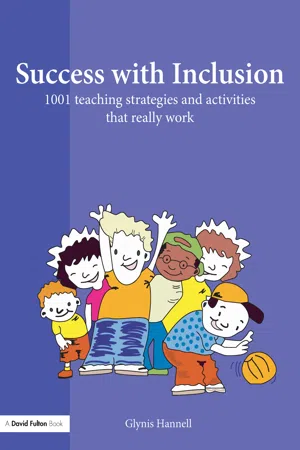![]()
Chapter 1
Effective teaching
Introduction
This chapter will explain some of the basic foundations of effective teaching. How does the brain actually learn? That, in itself, is a miracle. To be effective as teachers, we need to understand the gradual, biological process we call learning, because as teachers, we actually make a difference—a real, physical difference—to the way our pupils’ brains develop.
We also need to understand individual differences in learning capability and learning style. Then, we can adjust our teaching to the unique capacities of the individual pupils in our classes. Teachers who can do this are not only working hard, they are working smart!
Apart from inborn intelligence, every pupil has a range of personal qualities such as curiosity, persistence, self-confidence and so forth. The effective teacher can nurture these qualities and make a substantial difference in the quality of their pupils’ learning.
Take a moment to reflect upon your own schooldays. Which teacher had the greatest positive impact upon you? In all probability, it was the teacher who built your confidence, encouraged your persistence and excited your curiosity. This chapter provides a range of ideas for developing these positive learning characteristics in all of your pupils.
The chapter ends with some thoughts on creating an inclusive classroom. Being included in a group and feeling included can be two, quite different situations. The effective teacher does not just do inclusive things. The effective teacher builds a classroom community where inclusion is part of the social fabric of the group of pupils and adults who work together.
The following Appendix forms are referenced in this chapter in the order given:
Appendix Form 24: ‘Teacher checklist for successful learning’
Appendix Form 26: ‘Teacher chart for planning an inclusive programme’
Appendix Form 23: ‘Teacher checklist for mastery learning’
Appendix Form 30: ‘Pupil guide to making changes’
Appendix Form 33: ‘Pupil guide to setting goals’
Appendix Form 35: ‘Pupil self-evaluation’
Appendix Form 39: ‘Pupil notes: getting ready for a meeting’
Appendix Form 36: ‘Pupil: what i think about school’
Appendix Form 37: ‘Pupil reward cards’
Appendix Form 38: ‘Pupil guide to “I can do”’.
The brain and learning
Teachers—part of the miracle
The human brain is a miracle. From the earliest days of life, the cells of the human brain are organising themselves into networks that communicate with each other, store and process information and learn new things. As teachers, we are part of this miracle. What we do in class will have a direct influence on how the pupils’ brains develop. How does this happen?
The developing brain
The human brain has at least 100 billion neurons (brain cells). Each neuron has a cell body and a tree-like structure of branches called dendrites. The dendrites reach out and connect with each other at junctions called synapses.
The synapses are a very important part of the brain’s information highway. Information is processed, stored and retrieved through the network of neurons and synapses. The more these networks are used, the more the connections build up, so things become easier and easier to do.
A child is equipped with many more neurons and synapses than they will ever need. The networks that are used grow stronger and more complex. Those that are unused may become lost. If teachers provide the right learning experiences, brain development is enhanced and accelerated.
Some brain systems, such as those for language and vision, have critical periods for development. Once the critical stage has passed, it is very difficult to fully develop the networks of cells needed for that particular function.
For example, babies with amblyopia, or ‘lazy eye’, are born with one eye weaker than the other. The good eye may become dominant, and information from the weaker eye may be ignored. If this happens, the synapses connecting the weaker eye to the brain will fail to develop, because these synapses are not being used. Permanently impaired vision may result. That is why doctors often patch the good eye. They are trying to force the pathways from the weaker eye to develop before the synapses are permanently lost. There is a window of opportunity in early childhood for this to happen. If it is not developed during this time period, often those particular synapses in the visual pathways are lost, and the sight cannot be restored.
However, within limits, some...
